project CIRAC - flood risk and vulnerability mapping in climate change scenarios

Pedro Seixas Vale
Chairman of APS (2008-2016)
It is our belief that CIRAC will be the source of reference information for the flood risk analysis in mainland Portugal. It should be noted that currently there is a scientific consensus that climate change caused by the intensification of the greenhouse effect caused by some human activities will intensify throughout the XXI century. We know, therefore, that we will have to take measures for adaptation and mitigation to minimize the adverse effects of climate change and prevent the aggravation of their consequences for the population and the economy.
For the insurance industry, the CIRAC project is a tool to assess hazards that potentially will be held, which justifies its investment in the project, but it is also a contribution to the Portuguese society.We intend that CIRAC will be widely divulged among insurers, reinsurers, scientific community, public entities and civil society sectors that demonstrate a recognized interest in the matter. The European Union, the Directive 2007/60/EC of 23rd October 2007, transposed into Portuguese law by Decree-Law 115/2010, of 22nd October, establishes a framework for the assessment and management of flood risks that Member States should follow, providing relevance to the need for the "... creation of flood hazard maps and flood risk charts indicative of potential adverse consequences associated with different flood scenarios ...".
In Portugal, where until now there was no information in a structured and detailed manner, floods are responsible for huge losses, and significant changes are still expected in precipitation regimes, the frequency and intensity of weather phenomenon and extreme climate events, such as intense rainfall over short periods.Portugal, due to its characteristics, is very exposed to floods and there is no doubt that our territory will suffer significant damage caused by this risk. Over the past 40 years, there was a decreasing trend of rainfall and increased variability of accumulated rainfall in winter, with higher frequency of dry winters and rainy winters. The regionalized climate scenarios for Portugal, obtained through climate models, indicate the trend of increasing number of days with daily accumulated rainfall exceeding 50 mm in the north of the country until 2100.
The sea level rise, resulting from climate change, also contributes to a significant increase in the frequency and intensity of floods of marine origin. Due to the enormous complexity of the phenomena involved, opinions are divided with regard to the rhythms of the evolution of average sea level and respective magnitude. But there is no lack of consensus in the scientific community that the average sea level will continue to rise in the XXI century, which will affect the Portuguese territory with special intensity given its extensive coastline.CIRAC allows the assessment of risk by providing benchmark indices that allow different types of vulnerability that assist the stakeholders in making strategic decisions. The study area for this project was divided into two scales: a macro-scale, where were identified flood areas, with the possibility of analysis up to the parish or postcode and a micro-scale for regions considered vulnerable based on the criteria of probability of flooding and flood risk, defining the latter as the combination of the probability of flooding with the potential adverse consequences to human health, the environment, economic activities and cultural heritage.
Given the high number of recorded cases of floods and torrents, the two urban centers, Lisbon and Porto were analyzed in greater detail, as well as Algés, Vila Nova de Gaia and Coimbra. With CIRAC, the insurance sector has a working tool of undeniable interest to society.We hope that each of us learn how to use this tool in all its capacity so that together we can contribute to a better and more sustainable future for generations to come.
map server
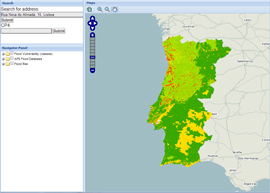
visualizaion tool

vulnerability index
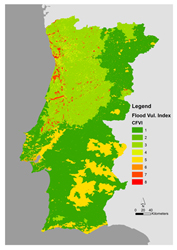
exposure index
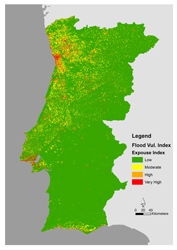
physical susceptibility

social susceptibility
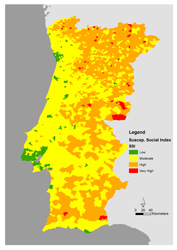
precipitation index
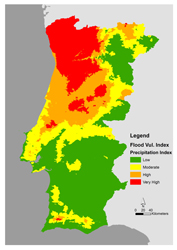
aps survey

lisbon risk maps
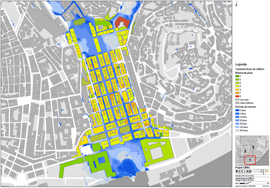
porto and Gaia risk maps
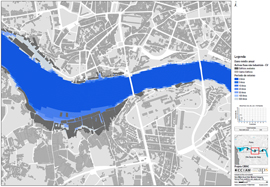
coimbra risk maps

algés risk maps
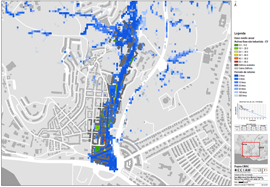
extreme climate scenarios
 Describes the methodology used for the analysis of extreme precipitation and its construction of climate scenarios.
Describes the methodology used for the analysis of extreme precipitation and its construction of climate scenarios.
Also presents some features of how to obtain the return periods of a given rainfall.
hydrodinamical modeling
 Introduction to hydrodynamic modeling for the different case studies. These results served as the basis for mapping risk in Lisboa, Algés, Porto / Gaia and Coimbra, contributing to the zoning of the flooded areas for various return periods
Introduction to hydrodynamic modeling for the different case studies. These results served as the basis for mapping risk in Lisboa, Algés, Porto / Gaia and Coimbra, contributing to the zoning of the flooded areas for various return periodsphysical susceptibility
 Susceptibility to flooding should be seen as the propensity of an area to be affected by the floods and is attributed to the intrinsic characteristics of the territory, such as slopes, geology, river network and land use. Physical Susceptibility to flooding derived primarily from the inherent characteristics of a particular basin.
Susceptibility to flooding should be seen as the propensity of an area to be affected by the floods and is attributed to the intrinsic characteristics of the territory, such as slopes, geology, river network and land use. Physical Susceptibility to flooding derived primarily from the inherent characteristics of a particular basin.social susceptibility
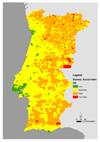 Social susceptibility to flooding is defined as the willingness of society to be affected, resist, adapt or recover when exposed to a flood. The Social Susceptibility Index (SSI) was developed to describe the functional characteristics and current socio-economic status that determine the ability of a population to deal with flooding, such as age, education, income, and function of the building typology and urban / rural.
Social susceptibility to flooding is defined as the willingness of society to be affected, resist, adapt or recover when exposed to a flood. The Social Susceptibility Index (SSI) was developed to describe the functional characteristics and current socio-economic status that determine the ability of a population to deal with flooding, such as age, education, income, and function of the building typology and urban / rural.vulnerability index
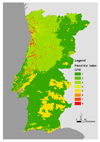 Vulnerability is a function of magnitude and rate of climate change, the variation to which a system is exposed, its sensitivity and adaptability. Thus, flood vulnerability is the extent of damage that can be expected under certain conditions of exposure, susceptibility.
Vulnerability is a function of magnitude and rate of climate change, the variation to which a system is exposed, its sensitivity and adaptability. Thus, flood vulnerability is the extent of damage that can be expected under certain conditions of exposure, susceptibility.
Associação Portuguesa de Seguradores (APS)
|
Grupo de investigação em Alterações Climáticas (CC-IAM)
|
| Fax: +351 213 831 430 Tel.: +351 213 848 100 |
Fax: +351 217 500 386 Tel: +351 217 500 389 |
| Rua Rodrigo da Fonseca, 41 1250-190 Lisboa |
Faculdade de Ciências, Univ. de Lisboa Ed C1, sala 1.4.39 Campo Grande 1749-016 Lisboa |

